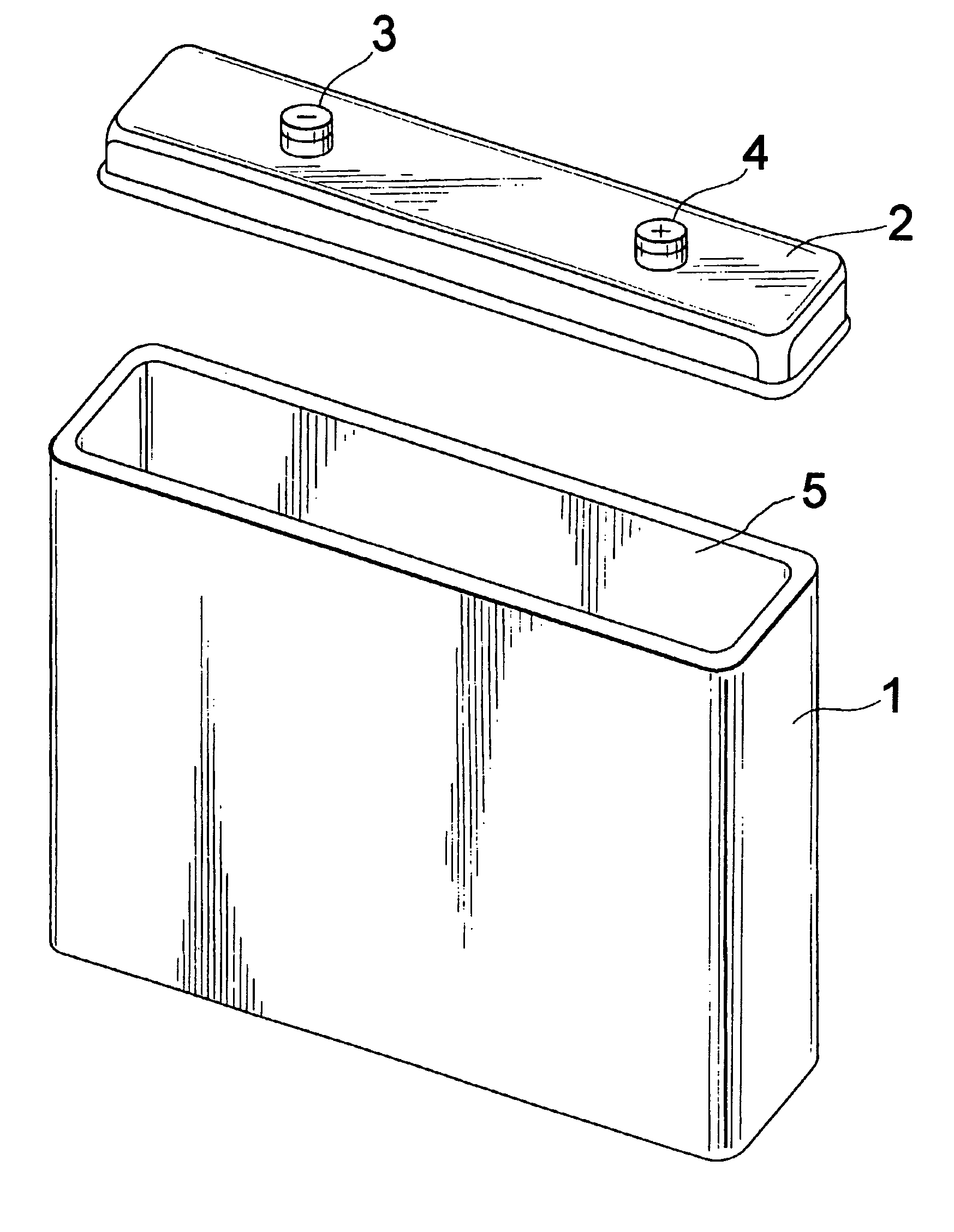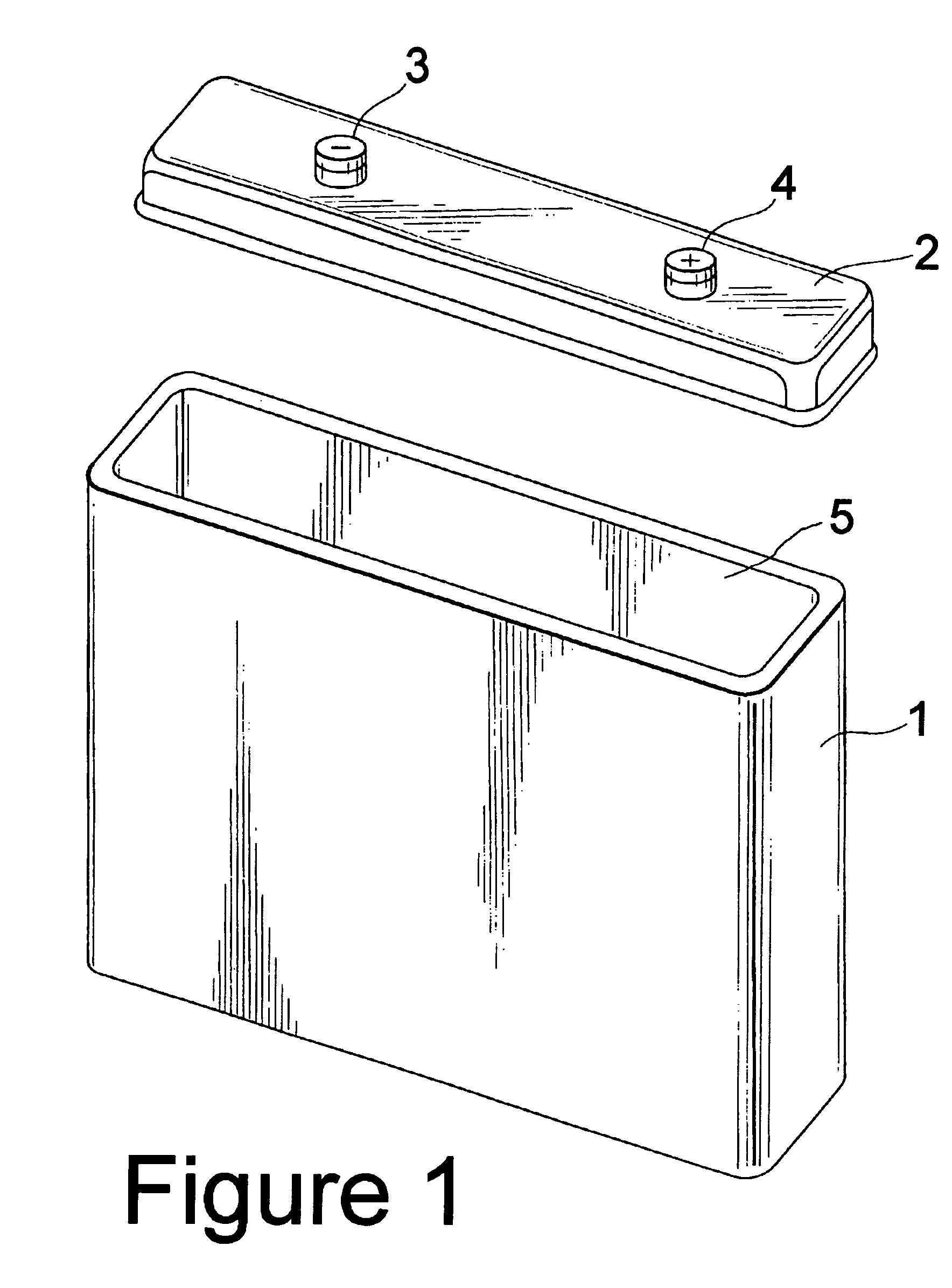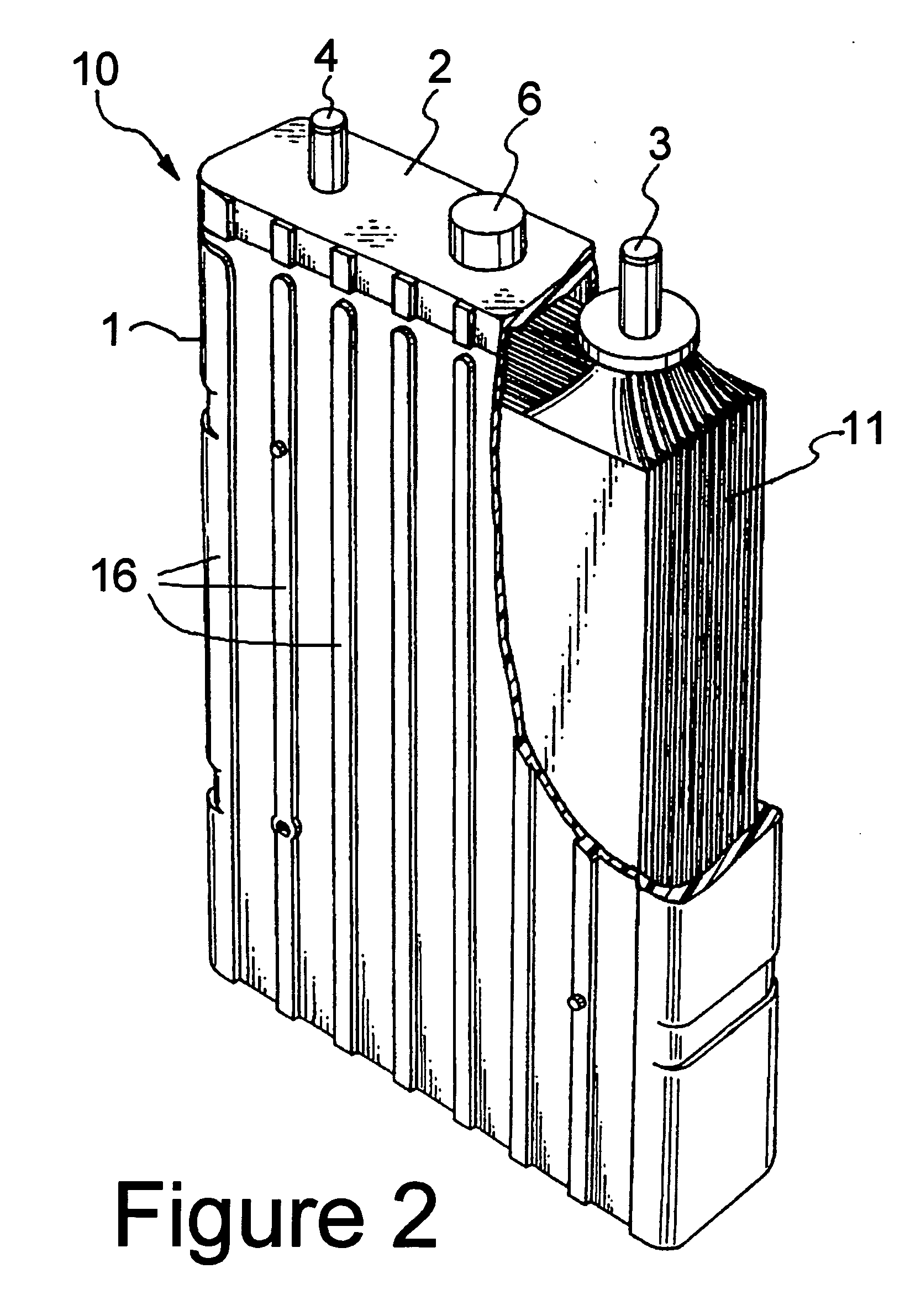Battery employing thermally conductive polymer case
a polymer case and battery technology, applied in the field of alkaline batteries, can solve the problems of poor tolerance to deep discharge, impractical power source for electric vehicles, hybrid electric vehicles,
- Summary
- Abstract
- Description
- Claims
- Application Information
AI Technical Summary
Benefits of technology
Problems solved by technology
Method used
Image
Examples
Embodiment Construction
[0018] The present invention includes battery cases formed from a polymeric material which has enhanced thermal conductivity and batteries which include such cases. Schematic illustrations of examples of secondary batteries and their cases embodying the present invention are shown in FIGS. 1 to 5, however, the present invention is not limited to these embodiments. FIG. 1 illustrates a battery case of the present invention comprising a container 1 and a lid 2 which are formed from the enhanced thermal conductivity polymeric material. The lid 2 is provided with a negative electrode terminal 3 and a positive electrode terminal 4. The container 1 and the lid 2 are welded by fusion or melt bonding with heat or other means such as vibration or sonic welding.
[0019]FIG. 2 depicts an embodiment of a battery 10 of the present invention which includes a rectangular battery container 1 formed from the enhanced thermal conductivity polymeric material. The battery contains an electrode group 11 ...
PUM
 Login to View More
Login to View More Abstract
Description
Claims
Application Information
 Login to View More
Login to View More - R&D
- Intellectual Property
- Life Sciences
- Materials
- Tech Scout
- Unparalleled Data Quality
- Higher Quality Content
- 60% Fewer Hallucinations
Browse by: Latest US Patents, China's latest patents, Technical Efficacy Thesaurus, Application Domain, Technology Topic, Popular Technical Reports.
© 2025 PatSnap. All rights reserved.Legal|Privacy policy|Modern Slavery Act Transparency Statement|Sitemap|About US| Contact US: help@patsnap.com



